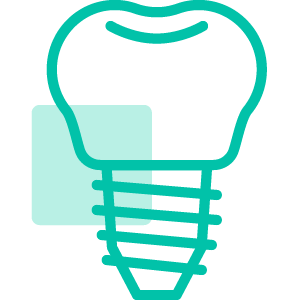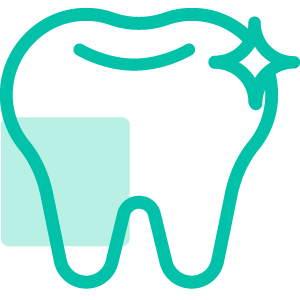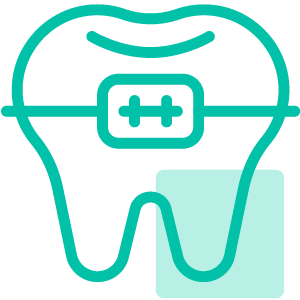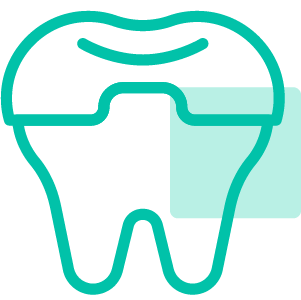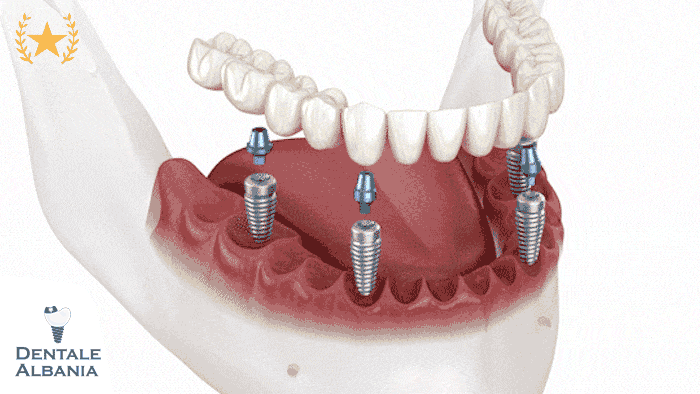Table of Contents
ToggleWhat Does a Dental Retainer Do and Why Is It Important?

- A retainer is the essential follow-up to braces or aligners. Once orthodontic treatment is complete, your teeth may look perfectly straight—but that doesn’t mean they’ll stay that way. Without a retainer, teeth have a natural tendency to shift back to their original position. This is due to muscle memory, bone remodeling, and everyday habits like chewing or grinding.
- Retainers prevent your smile from relapsing. They hold your teeth in place while the surrounding bone, gum, and soft tissue adjust to the new alignment. Without them, months or even years of orthodontic progress can slowly reverse.
- They act as a protective barrier against shifting. Just as braces slowly guided your teeth into alignment with consistent pressure, retainers preserve that result by maintaining gentle, passive support.
- Retainers help maintain bite correction. Beyond keeping teeth straight, they also help ensure that your bite remains balanced—especially if you’ve had major adjustments such as overbite or underbite correction.
- Wearing a retainer is a long-term commitment. While you may reduce the hours over time, some form of retainer use is often needed indefinitely to maintain your results.
- They protect your investment. Orthodontic treatment is not only a time commitment but also a financial one. Retainers make sure that effort and money don’t go to waste by keeping your smile looking great for years to come.
- Retainers may even have secondary benefits. For some people, they help reduce grinding or clenching (bruxism), especially when worn at night. Others may use specially designed retainers for conditions like tongue thrust.
What Is a Dental Retainer and How Is It Used?
- A dental retainer is a custom-made orthodontic appliance. It’s designed to fit precisely over your teeth (or behind them, in the case of fixed retainers) and is used to maintain their new position after braces or aligners have done their job.
- Retainers serve the retention phase of treatment. While braces or clear aligners actively move teeth using controlled force, retainers are passive—they don’t move teeth but instead hold them in their corrected position.
- The main function is to “retain” alignment. After teeth have shifted during orthodontic treatment, the surrounding bone and ligaments need time to stabilize. A retainer provides the support your teeth need during this crucial phase of adjustment.
- Retainers are usually prescribed by orthodontists or dentists. Once your braces are removed or your aligner program is complete, your provider will recommend the right type of retainer based on your specific bite and alignment history.
- They can be used in various situations. Apart from post-braces care, retainers might also be used to close small gaps, prevent teeth grinding (bruxism), or even support the jaw in mild TMJ cases.
- They are not interchangeable with aligners. Retainers are often confused with aligners due to their similar look, especially the clear Essix or Vivera types. But remember: aligners move teeth—retainers don’t.
What Are the Different Types of Dental Retainers?
What Is a Fixed Retainer?
- A fixed (or permanent) retainer is a thin wire bonded behind your front teeth. It’s typically attached to the inside surface of your lower or upper front teeth using dental cement.
- They are ideal for maintaining front teeth alignment. These teeth are the most visible and prone to relapse, so fixed retainers are often placed here after braces.
- Pros of fixed retainers:
- Always working—no need to remember to wear them.
- Invisible from the outside.
- Effective at preventing unwanted movement.
- Cons of fixed retainers:
- Harder to clean—plaque can build up around the wire if not properly flossed.
- Can occasionally become detached and need repair.
- May not be suitable for every patient, especially if oral hygiene is a concern.
What Is a Removable Retainer?
- Removable retainers can be taken in and out of the mouth as needed. They are most commonly prescribed after braces or Invisalign treatment, especially in the upper arch.
- There are different types of removable retainers:
- Essix retainers: Clear plastic trays that fit snugly over the entire arch. They’re virtually invisible and popular for aesthetic reasons.
- Hawley retainers: Made with a metal wire across the front of the teeth and an acrylic base that rests on the roof of your mouth or behind your lower teeth. They are more durable and adjustable.
- Vivera retainers: Manufactured by Invisalign, these are clear retainers made using 3D imaging and are known for their comfort and durability.
- How to use removable retainers:
- Usually worn full-time for the first few months, then gradually reduced to nighttime only.
- Should always be removed while eating or drinking anything other than water.
- Pros of removable retainers:
- Easy to clean and maintain.
- Can be removed for eating, brushing, and flossing.
- Aesthetic options available.
- Cons of removable retainers:
- Can be lost or damaged if not stored properly.
- Require patient compliance—if you don’t wear it, it doesn’t work.
- May become loose over time and need replacement.
Do You Really Have to Wear a Retainer Forever?
- The short answer is yes—at least part-time. Orthodontists typically recommend lifetime nighttime wear to maintain results.
- Why lifelong use is necessary:
- Teeth are always under pressure from chewing, talking, and natural muscle movements.
- Without retention, teeth can shift subtly over the years—a process known as relapse.
- Full-time vs. nighttime use:
- First 3–6 months: Full-time wear (except eating or brushing).
- After that: Nighttime wear indefinitely.
- What happens if you stop too early:
- Crowding or spacing can return.
- Bite issues may reappear.
- You may need additional orthodontic treatment in the future.
How Long Do You Have to Wear a Retainer?
Can You Stop Wearing Your Retainer After 2 or 10 Years?
- Orthodontists recommend wearing your retainer as long as you want your teeth to stay straight.
- Stopping after 2–10 years might be possible for some, but the risk of relapse remains.
- Expert consensus: Even decades later, teeth can shift. Occasional nighttime wear may still be required.
How Quickly Do Teeth Move Without a Retainer?
- Teeth can start shifting within a few days of not wearing your retainer.
- Factors that affect speed of movement:
- Age (younger individuals may see faster relapse).
- How long you wore braces or aligners.
- Your bone and gum tissue density.
- Signs your teeth are moving:
- Gaps reappearing.
- Teeth feeling tight or misaligned.
- Bite feeling different when chewing.
Can You Wear an Old Retainer to Shift Teeth Back?
- Old retainers can sometimes help if your teeth have only shifted slightly. However, this depends on how long you’ve gone without wearing it and how much your teeth have moved.
- Why your old retainer may not fit anymore:
- Teeth naturally shift over time without proper retention.
- Bone and gum structures adjust to the new position, making it harder for the old retainer to fit comfortably or correctly.
- Risks of forcing an old retainer:
- It can cause discomfort, pain, or even damage to your teeth and gums.
- Forcing a tight retainer could harm dental restorations or existing orthodontic work.
- A warped or damaged retainer won’t move your teeth effectively and could worsen alignment.
- What to do instead:
- Book a consultation with your orthodontist to evaluate current alignment.
- In mild cases, a new retainer may help guide teeth back if addressed early.
- For more severe shifts, a brief course of clear aligners or braces might be required before transitioning back to a retainer.
Which Retainer Is Better: Permanent or Removable?

- There’s no one-size-fits-all answer—each type suits different needs and lifestyles.
- Permanent retainers are ideal if:
- You want a “set it and forget it” approach.
- You’ve had significant alignment issues or gaps that could reopen.
- You struggle to remember daily/nightly wear.
- Removable retainers are ideal if:
- You value convenience for brushing, flossing, or eating.
- You prefer to have control over when to wear the device.
- You’re committed to consistent wear and care.
- Compare factors:
- Lifestyle: Busy individuals may forget removable retainers; fixed ones stay in place.
- Hygiene: Fixed retainers can trap plaque; removable ones are easier to clean.
- Durability: Fixed retainers can last years but may require dental visits for repairs; removable ones can crack or get lost.
- Compliance: If you’re likely to skip wearing it, go with a fixed version.
- Consultation with a dentist or orthodontist is crucial to choosing the best option for you.
Are Retainers Painful or Uncomfortable to Wear?
- Some discomfort is normal, especially at the beginning, but retainers should never be painful long term.
- Your teeth may feel tight when you first start wearing a new retainer or if you haven’t worn it for a while.
- If your retainer is causing pain, damage, or sores, it’s a sign it may need adjustment or replacement.
- Consult your dentist or orthodontist if you experience persistent irritation or pain while wearing your retainer.
Why Does My Retainer Cut My Tongue or Feel Tight?
- Initial tightness is expected as the retainer repositions your teeth slightly or maintains their alignment.
- A poorly fitted retainer can rub against soft tissues, causing cuts or sores on the tongue, cheeks, or gums.
- Plastic edges on clear retainers or wires on Hawley retainers can sometimes need smoothing or adjusting.
- What you can do:
- Don’t try to adjust it yourself—this may worsen the fit.
- Use dental wax temporarily if it’s irritating your tongue.
- Visit your orthodontist for a professional adjustment or replacement.
Is It Normal to Gag With Retainers?
- Yes, especially with new removable retainers, gagging can be a temporary response as your mouth adjusts.
- This is more common with bulky or ill-fitting retainers, or if you’re prone to a sensitive gag reflex.
- How to reduce gagging:
- Practice wearing the retainer for short periods to build tolerance.
- Focus on nasal breathing and distraction techniques.
- Talk to your orthodontist—trimming or adjusting the retainer can help.
Can a Retainer Cause Gum Recession or Bite Problems?

- Improperly fitted retainers can contribute to gum issues, especially if they place uneven pressure on the teeth or irritate the soft tissues.
- Fixed retainers may trap plaque and food, increasing the risk of gum inflammation and recession if not cleaned thoroughly.
- Retainers that don’t allow teeth to occlude properly (like worn-out or warped plastic ones) can slowly alter your bite.
- It’s important to have regular dental check-ups to ensure your retainer is still fitting correctly and isn’t contributing to any oral health issues.
- Watch for signs of gum irritation, shifting bite, or discomfort, and consult your dentist if any appear.
- Adjustments or replacements are sometimes necessary as your mouth naturally changes over time.
How Much Do Retainers Cost in the UK?
Retainers are a crucial part of orthodontic aftercare, but the cost can vary depending on whether you go private or through the NHS.
How Much Do Retainers Cost Privately?
- Private removable retainers typically cost between £70 and £300 per arch, depending on the material (Essix, Hawley, or Vivera).
- Fixed retainers can range from £150 to £400, as they require more clinical time and precision bonding.
- Replacements can be cheaper if impressions or scans are already on file, and some providers offer discounts for ordering upper and lower retainers together.
- Online retainer providers (with self-impression kits) can offer retainers starting around £60, but may lack the precision of in-clinic fittings.
- Additional options like retainer insurance may cost around £30 for 6 months and cover breakage or loss.
How Much Do Retainers Cost Through the NHS?
- NHS retainers are typically included in the cost of children’s orthodontic treatment, but they usually only provide one set.
- Replacements or extra retainers must be paid for privately, often through your original NHS provider.
- Adults aren’t eligible for NHS-funded retainers unless part of specific hospital-based treatments.
How Much Do Retainers Cost in Albania?
If you’re considering orthodontic treatment or just finishing a braces or aligner journey, Albania offers a cost-effective destination for obtaining dental retainers—without compromising on quality. Whether you’re a local resident or exploring dental tourism, understanding the pricing landscape in Albania can help you plan your post-treatment care efficiently.
-
Average cost of removable retainers:
In Albania, clear removable retainers such as Essix or Vivera-style trays typically cost between €60 and €120 per arch. Dual arch retainers (upper and lower) may be offered as a package, ranging from €100 to €200, depending on the clinic and materials used. -
Cost of Hawley retainers:
The more traditional Hawley retainers, which use acrylic and metal wires, are slightly more affordable than in Western Europe and usually range from €80 to €150. -
Fixed retainers (bonded wires):
A fixed lingual retainer bonded behind the front teeth may cost €70 to €150, depending on whether it’s placed on the upper or lower arch or both. Prices also vary based on the material (stainless steel vs. multi-strand wire) and whether you need a full-arch or partial retainer. -
Replacement retainers:
If you’ve already been treated and only need a replacement retainer, many Albanian clinics accept digital scans or impressions from abroad and can fabricate retainers for €50 to €100, making it an attractive option for dental tourists. -
Why are prices lower in Albania?
The lower cost of living and operational expenses allows Albanian dental clinics to provide high-quality orthodontic appliances at a fraction of the cost compared to the UK or Western Europe. Many clinics are equipped with modern 3D scanning and in-house labs, which helps streamline production and reduce turnaround times. -
Extras to consider:
Some clinics may include a free retainer with orthodontic treatment packages, while others offer retainer insurance or discounts on future replacements. Always ask what’s included in your treatment plan.
In summary, retainers in Albania offer an excellent balance between affordability and quality. Whether you’re finishing orthodontic treatment locally or visiting for dental tourism, Albania stands out as a smart, budget-friendly choice for long-term smile retention.
Why Are Retainers So Expensive?
Many people wonder why such a small dental appliance comes with a relatively high price tag. The truth is, several factors contribute to the cost of teeth retainers—and understanding them can help you appreciate their long-term value.
- Custom fabrication is key: Every retainer is made specifically for your mouth, using either impressions or digital scans. This requires specialized equipment and technician time.
- High-quality materials: Whether it’s clear Essix plastic, acrylic, or multi-strand wire, retainers use dental-grade materials built for daily wear and longevity.
- Clinical time and expertise: Especially with fixed retainers, a professional must take time to fit, bond, and adjust the appliance with precision.
- Preventing relapse saves money: While a retainer may cost £100–£300, it’s far cheaper than undergoing another round of braces or aligners if your teeth shift again.
- Maintenance and insurance: Some providers offer extra services like retainer insurance, which adds cost upfront but can save you money on future replacements.
By investing in a high-quality retainer, you’re safeguarding the time, money, and effort already spent on your orthodontic journey.
Can You Get a Retainer Without Seeing a Dentist?
In recent years, more people are exploring ways to get a retainer without a trip to the dental clinic—but is it a smart move?
- Online impression kits are available: Many companies offer mail-order retainers that begin with a DIY impression kit you use at home. Once you send it back, a lab fabricates your custom retainer and ships it to you.
- Cost-effective alternative: Online options typically cost less than dentist-provided retainers. Some start as low as £60–£80 for one arch, compared to £100–£300 at a clinic.
- Pros of DIY retainers: Convenience and affordability are the major benefits. You skip appointments, and some services offer rapid turnaround and replacement insurance.
- Potential downsides: The main risk is accuracy. If your impression isn’t perfect, the resulting retainer might not fit properly, leading to discomfort, poor retention, or even tooth movement.
- Lack of professional oversight: Without a dentist examining your bite, gums, and alignment, problems like gum recession, bite shifts, or poor retainer fit can go unnoticed.
- When it might be okay: If you’ve had a retainer before and just need a replacement (with no recent tooth movement), online services may work fine—as long as the company is reputable.
While it’s possible to get a retainer without seeing a dentist, it’s best reserved for simple replacements rather than initial fittings or after noticeable teeth shifting.
What’s the Lifespan of a Retainer and How Do You Clean It?
Keeping your retainer clean and knowing when it’s time for a replacement is essential to maintaining both oral health and your straight smile.
- Average lifespan by type:
- Essix (clear plastic) retainers usually last 6 months to 2 years with daily wear.
- Hawley retainers (metal and acrylic) can last 5–10 years or more if cared for properly.
- Fixed retainers (bonded wire) can last 5–10 years, but they may need rebonding or adjustments.
- Signs it’s time to replace a retainer:
- Cracks or warping in plastic retainers.
- Loose or bent wires in Hawley retainers.
- Fixed retainers detaching or collecting plaque/tartar you can’t clean off.
- A retainer that no longer fits comfortably.
- Best practices for cleaning:
- Daily cleaning with mild soap and lukewarm water. Avoid hot water, which can warp plastic.
- Avoid toothpaste on plastic retainers—it can be abrasive and cause dullness or micro-scratches.
- Soak weekly using retainer-cleaning tablets, a white vinegar solution, or baking soda and water to remove buildup.
- Use a soft toothbrush to gently scrub, especially around any edges or wires.
- Fixed retainers require flossing with floss threaders or water flossers to remove food debris and plaque.
- Storage tips:
- Always keep removable retainers in their protective case when not in use.
- Avoid wrapping in tissues—this is the #1 way retainers accidentally end up in the trash.
- Keep retainers away from pets, which often chew them.
Maintaining your retainer properly not only keeps it hygienic but also helps it last longer—saving you from unnecessary replacements and protecting your smile investment.
Why Do Retainers Start to Smell and How Do You Prevent It?
Retainers can develop an unpleasant smell over time due to poor hygiene and bacterial buildup—but it’s totally avoidable with the right care.
- Bacteria and biofilm buildup:
- Your mouth contains natural bacteria that can accumulate on your retainer.
- When not cleaned regularly, a sticky biofilm (similar to plaque) forms, trapping odour-causing particles.
- Food debris, saliva, and dead skin cells also contribute to the smell.
- Cleaning routines to prevent odour:
- Clean your retainer daily with gentle soap and a soft toothbrush. Rinse thoroughly.
- Avoid using toothpaste on plastic retainers—it can cause microscopic scratches where bacteria thrive.
- Soak your retainer weekly in a mix of white vinegar and water, or use dedicated retainer-cleaning tablets for a deeper clean.
- Consider investing in an ultrasonic cleaner, which uses high-frequency vibrations to dislodge bacteria and debris.
- Storage tips when not in use:
- Always dry your retainer before storing it to prevent moisture-loving bacteria from multiplying.
- Use a well-ventilated retainer case—avoid airtight containers that trap moisture.
- Never leave your retainer out in the open, especially in warm or humid places like bathrooms.
Good hygiene habits not only eliminate bad odours but also extend the life of your retainer—and protect your breath and smile.
Will My Teeth Move Back If I Start Wearing My Retainer Again?
If you’ve stopped wearing your retainer and your teeth have shifted, you might wonder if simply putting it back in can reverse the movement. The answer depends on how much time has passed and how far your teeth have moved.
- Situations where it may help mildly shifted teeth:
- If you’ve only skipped wearing your retainer for a few days or a couple of weeks, it might still fit snugly.
- In minor cases, reintroducing your retainer can gently guide your teeth back into alignment.
- You may feel slight pressure or tightness—this is normal and usually temporary.
- When it’s too late, and retreatment is needed:
- If your retainer feels painful or doesn’t fit anymore, forcing it can damage your teeth or the retainer itself.
- Teeth that have significantly shifted likely require new orthodontic treatment such as clear aligners or braces.
- Attempting to use an ill-fitting retainer can also cause gum irritation or changes in bite alignment.
- Importance of a dentist check before retrying:
- Your dentist or orthodontist can assess if it’s safe to resume wearing your old retainer.
- They may suggest making a new retainer or minor retreatment, depending on how far your teeth have moved.
- Monitoring your progress ensures you won’t risk further complications or discomfort.
Wearing your retainer regularly is always the best way to avoid having to undo months (or years) of orthodontic progress.
Can Retainers Keep My Bite Aligned Too?
While retainers are primarily known for keeping your teeth straight, they also play an important role in maintaining your bite — the way your upper and lower teeth come together when you close your mouth.
- How retainers stabilize both teeth and bite:
- After orthodontic treatment, your bite has been adjusted along with the position of your teeth.
- Retainers help to “hold” not just the alignment of individual teeth but the overall relationship between upper and lower arches.
- This stabilization is crucial to prevent issues like an overbite, underbite, or crossbite from recurring.
- When extra appliances might be needed:
- In some cases, especially after more complex orthodontic treatments, your provider may recommend additional appliances to ensure your bite stays in place.
- This might include bite plates, elastics, or nighttime mouthguards in conjunction with your retainer.
- Monitoring changes in bite over time:
- Even with a retainer, your bite can naturally change due to aging, tooth wear, or habits like grinding.
- Regular dental visits allow your provider to catch early signs of bite misalignment and adjust your retainer or treatment plan accordingly.
- Don’t ignore changes in how your teeth come together — a shifting bite can lead to jaw discomfort, headaches, or uneven tooth wear.
Retainers are more than just cosmetic tools — they’re essential for maintaining the functional balance of your smile.
Can You Just Wear a Bottom Retainer?

Wearing a retainer only on your bottom teeth might seem like a convenient option, but it’s important to understand the potential implications before deciding.
- When single arch retainers are prescribed:
- Some orthodontic cases only require retention on the bottom arch, especially if the upper teeth were naturally aligned or not treated.
- Your orthodontist might prescribe a bottom-only retainer if the lower teeth are more prone to shifting or if treatment was focused exclusively on the bottom row.
- Risk of mismatch if upper isn’t retained:
- Without a matching upper retainer, there’s a chance your top teeth could shift independently.
- This can lead to a bite imbalance where the top and bottom teeth no longer align properly, potentially causing jaw discomfort or uneven wear.
- Dentist’s guidance on dual vs. single retainers:
- It’s critical to follow your orthodontist’s or dentist’s instructions when it comes to retainer wear.
- Even if your upper teeth appear stable, professional monitoring is needed to ensure they stay that way.
- Many professionals recommend wearing both top and bottom retainers (dual arch retention) to preserve the results of full-mouth orthodontic treatment.
In short, while wearing a bottom-only retainer is sometimes appropriate, it should always be done under professional guidance to avoid compromising your bite or smile symmetry.
Frequently Asked Questions About Teeth Retainers
Do I Have to Sleep With My Retainer?
- Yes, in most cases you are expected to sleep with your retainer — especially during the maintenance phase after your orthodontic treatment. This helps your teeth stay in their corrected positions long-term.
- Nighttime wear is usually recommended after the initial full-time wearing phase, which often lasts 4–6 months post-braces or aligners.
- Sleeping with your retainer prevents relapse, the natural tendency of teeth to shift back toward their original position once braces are removed.
- Consistency is key — skipping nights, especially early on, can allow teeth to move enough that the retainer may no longer fit.
- Over time, your dentist may reduce the frequency of wear to just a few nights a week. But lifelong nighttime use is typically advised to maintain the results.
- Wearing your retainer at night is low-effort and effective. It also minimizes wear and tear compared to full-time daily use.
- If you forget to wear it occasionally, try to wear it as soon as possible the next night and monitor if it still fits snugly.
Can a Tight Retainer Damage Your Teeth?
- A snug retainer is normal, especially after you’ve missed wearing it for a night or two — your teeth may have slightly shifted, and the retainer is gently guiding them back.
- However, excessive tightness or pain that doesn’t go away after a few minutes of wear could be a sign that your teeth have moved too much and the retainer no longer fits properly.
- Forcing a misfitting retainer can lead to unwanted movement, bite issues, or even damage to dental restorations like fillings, veneers, or crowns.
- Prolonged discomfort or sharp pressure is a red flag. In these cases, stop using the retainer and consult your dentist or orthodontist for an evaluation.
- Regular retainer wear prevents this problem — wearing it as prescribed ensures minimal movement and maintains a comfortable fit.
Retainers that are too old may lose their shape or strength and no longer provide even pressure, increasing the risk of uneven forces on your teeth.

